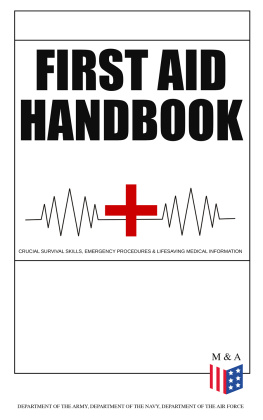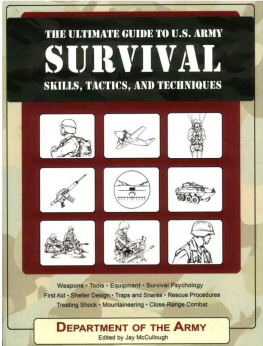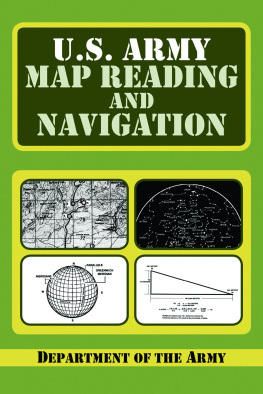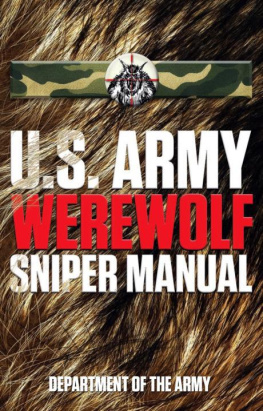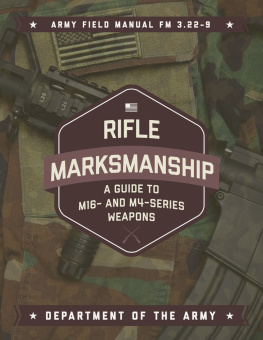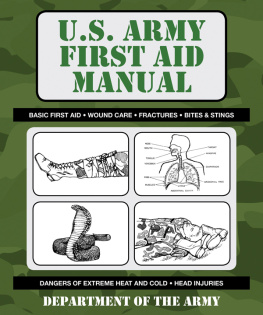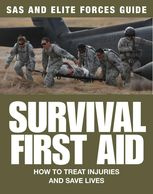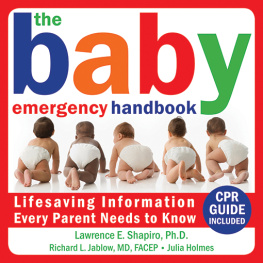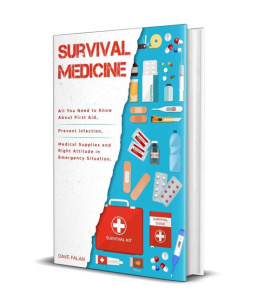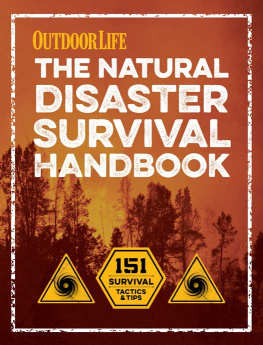Table of Contents
Department of the Army, Department of the Navy, Department of the Air Force
First Aid Handbook - Crucial Survival Skills, Emergency Procedures & Lifesaving Medical Information
Learn the Fundamental and Basic Measures for Providing Help to the Injured: Treat Fractures, Climatic Injuries, Bites and Stings (With 100+ Explanatory Images)
Madison & Adams Press, 2017. No claim to original U.S. Government Works
Contact
ISBN 978-80-268-7724-0
This is a publication of Madison & Adams Press. Our production consists of thoroughly prepared educational & informative editions: Advice & How-To Books, Encyclopedias, Law Anthologies, Declassified Documents, Legal & Criminal Files, Historical Books, Scientific & Medical Publications, Technical Handbooks and Manuals. All our publications are meticulously edited and formatted to the highest digital standard. The main goal of Madison & Adams Press is to make all informative books and records accessible to everyone in a high quality digital and print form.
PREFACE
This manual meets the first aid training needs of individual service members. Because medical personnel will not always be readily available, the nonmedical service members must rely heavily on their own skills and knowledge of life-sustaining methods to survive on the integrated battlefield. This publication outlines both self-aid and aid to other service members (buddy aid). More importantly, it emphasizes prompt and effective action in sustaining life and preventing or minimizing further suffering and disability. First aid is the emergency care given to the sick, injured, or wounded before being treated by medical personnel. The term first aid can be defined as urgent and immediate lifesaving and other measures, which can be performed for casualties by nonmedical personnel when medical personnel are not immediately available. Nonmedical service members have received basic first aid training and should remain skilled in the correct procedures for giving first aid. This manual is directed to all service members. The procedures discussed apply to all types of casualties and the measures described are for use by both male and female service members.
This publication is in consonance with the following North Atlantic Treaty Organization (NATO) International Standardization Agreements (STANAGs) and American, British. Canadian, and Australian Quadripartite Standardization Agreements (QSTAGs).
| TITLE | STANAG | QSTAG |
|---|
| Medical Training in First Aid, Basic Hygiene and Emergency Care | 2122 | 535 |
| First Aid Kits and Emergency Medical Care Kits | 2126 |
| Medical First Aid and Hygiene Training in NBC Operations | 2358 |
| First Aid Material for Chemical Injuries | 2871 |
These agreements are available on request, using Department of Defense (DD) Form 1425 from the Standardization Documents Order Desk, 700 Robins Avenue, Building 4, Section D, Philadelphia, Pennsylvania 19111-5094.
Unless this publication states otherwise, masculine nouns and pronouns do not refer exclusively to men.
Use of trade or brand names in this publication is for illustrative purposes only and does not imply endorsement by the Department of Defense (DOD).
CHAPTER 1
FUNDAMENTAL CRITERIA FOR FIRST AID
The fate of the wounded rests in the hands of the ones who apply the first dressing.
Nicholas Senn (1898) (49th President of the American Medical Association)
1-1. General
When a nonmedical service member comes upon an unconscious or injured service member, he must accurately evaluate the casualty to determine the first aid measures needed to prevent further injury or death. He should seek medical assistance as soon as possible, but he should not interrupt the performance of first aid measures. To interrupt the first aid measures may cause more harm than good to the casualty. Remember that in a chemical environment, the service member should not evaluate the casualty until the casualty has been masked. After performing first aid, the service member must proceed with the evaluation and continue to monitor the casualty for development of conditions which may require the performance of necessary basic lifesaving measures, such as clearing the airway, rescue breathing, preventing shock, and controlling bleeding. He should continue to monitor the casualty until relieved by medical personnel.
Service members may have to depend upon their first aid knowledge and skills to save themselves (self-aid) or other service members (buddy aid/ combat lifesaver). They may be able to save a life, prevent permanent disability, or reduce long periods of hospitalization by knowing WHAT to do, WHAT NOT to do, and WHEN to seek medical assistance.
NOTE
The prevalence of various body armor systems currently fielded to US service members, and those in development for future fielding, may present a temporary obstacle to effective evaluation of an injured service member. You may have to carefully remove the body armor from the injured service member to complete the evaluation or administer first aid. Begin by removing the outer most hard or soft body armor components (open, unfasten or cut the closures, fasteners, or straps), then remove any successive layers in the same manner. Be sure to follow other notes, cautions and warnings regarding procedures in contaminated situations and when a broken back or neck is suspected. Continue to evaluate.
1-2. Terminology
To enhance the understanding of the material contained in this publication, the following terms are used
- Combat lifesaver. This is a US Army program governed by Army Regulation (AR) 350-41. The combat lifesaver is a member of a nonmedical unit selected by the unit commander for additional training beyond basic first aid procedures (referred to as enhanced first aid). A minimum of one individual per squad, crew, team, or equivalent-sized unit should be trained. The primary duty of this individual does not change. The additional duty of combat lifesaver is to provide enhanced first aid for injuries based on his training before the trauma specialist (military occupational specialty [MOS] 91W) arrives. The combat lifesavers training is normally provided by medical personnel assigned, attached, or in direct support (DS) of the unit. The senior medical person designated by the commander manages the training program.
- Trauma Specialist (US Army) or Hospital Corpsman (HM). A medical specialist trained in emergency medical treatment (EMT) procedures and assigned or attached in support of a combat or combat support unit or marine forces.
- Casualty evacuation. Casualty evacuation (CASEVAC) is a term used by nonmedical units to refer to the movement of casualties aboard nonmedical vehicles or aircraft. See also the term transported below. Refer to FM 8-10-6 for additional information.
CAUTION
Casualties transported in this manner do not receive en route medical care.
- Enhanced first aid (US Army). Enhanced first aid is administered by the combat lifesaver. It includes measures, which require an additional level of training above self-aid and buddy aid, such as the initiation of intravenous (IV) fluids.
- Medical evacuation. Medical evacuation is the timely, efficient movement of the wounded, injured, or ill service members from the battlefield and other locations to medical treatment facilities (MTFs). Medical personnel provide en route medical care during the evacuation. Once the casualty has entered the medical stream (trauma specialist, hospital corpsman, evacuation crew, or MTF), the role of first aid in the care of the casualty ceases and the casualty becomes the responsibility of the health service support (HSS) chain. Once he has entered the HSS chain he is referred to as a

